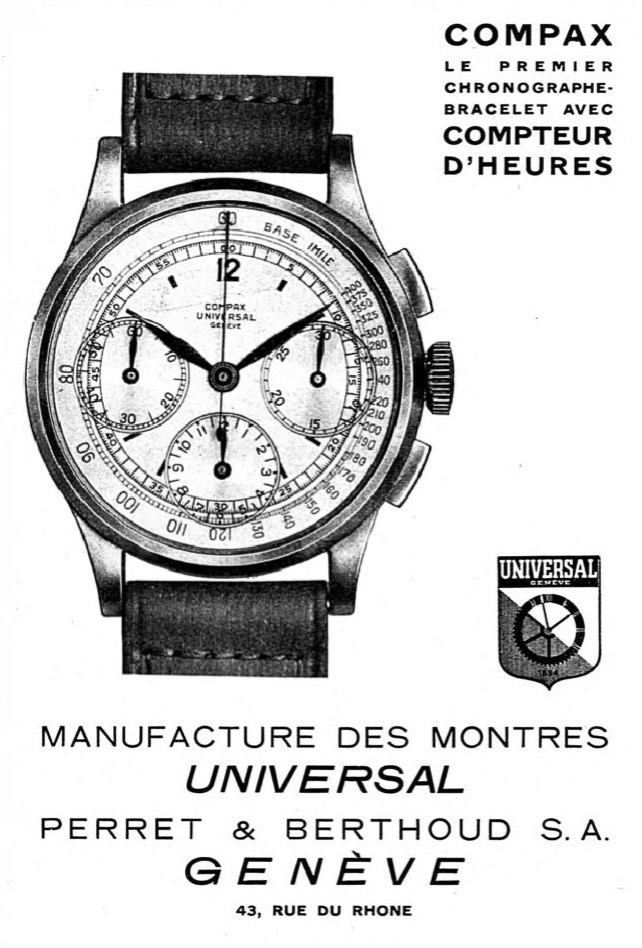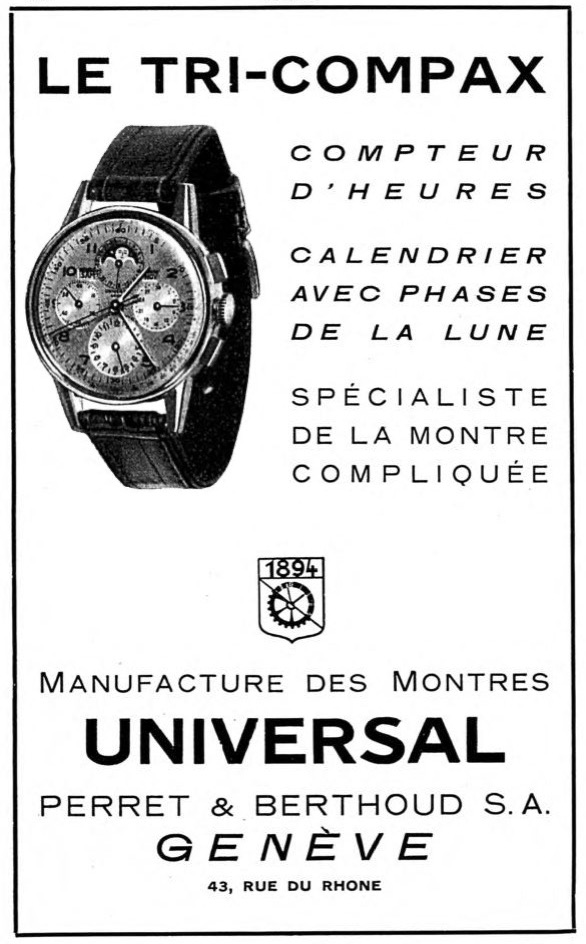
Compax was a model name used by Universal Genève to refer to a chronograph watch with minute and hour counters and small seconds at 3, 6, and 9, respectively, as opposed to the Compur, which lacked the hour counter. The term is often used today for any chronograph with subdials at 3, 6, and 9. Universal later introduced the Tri-Compax, with a full calendar and moon phase subdial at 12, and Uni-Compax, a re-brand of the Compur. The term Bi-Compax is sometimes used today to refer to a watch with subdials at 3 and 9 but this is not a historic Universal brand name.

Universal Genève introduced the two-button Compur chronograph in 1934, featuring a movement produced by Martel. The more-advanced Cal. 281 Compax was introduced the following year, adding an hour counter at 6. This was augmented in 1936 by the Uni-Compax, an updated Compur. The 1940 Aero-Compax added a non-running display at 12 connected to a left-side crown, while the full-calendar Tri-Compax appeared in 1944 with a date pointer and moon phase indicator in this location. No historic Universal model ever used the Bi-Compax name.
The brand fell out of favor in the 1970s but was revived in 1991 with a new line of Compax chronographs. As early as 1995 the Compax name was applied as a generic description of chronograph watches with a 3-6-9 dial, and the term Bi-Compax for a 3-9 dial was coined about a decade later. This lead to confusion about the term, with Tri-Compax often used for a 3-6-9 chronograph.